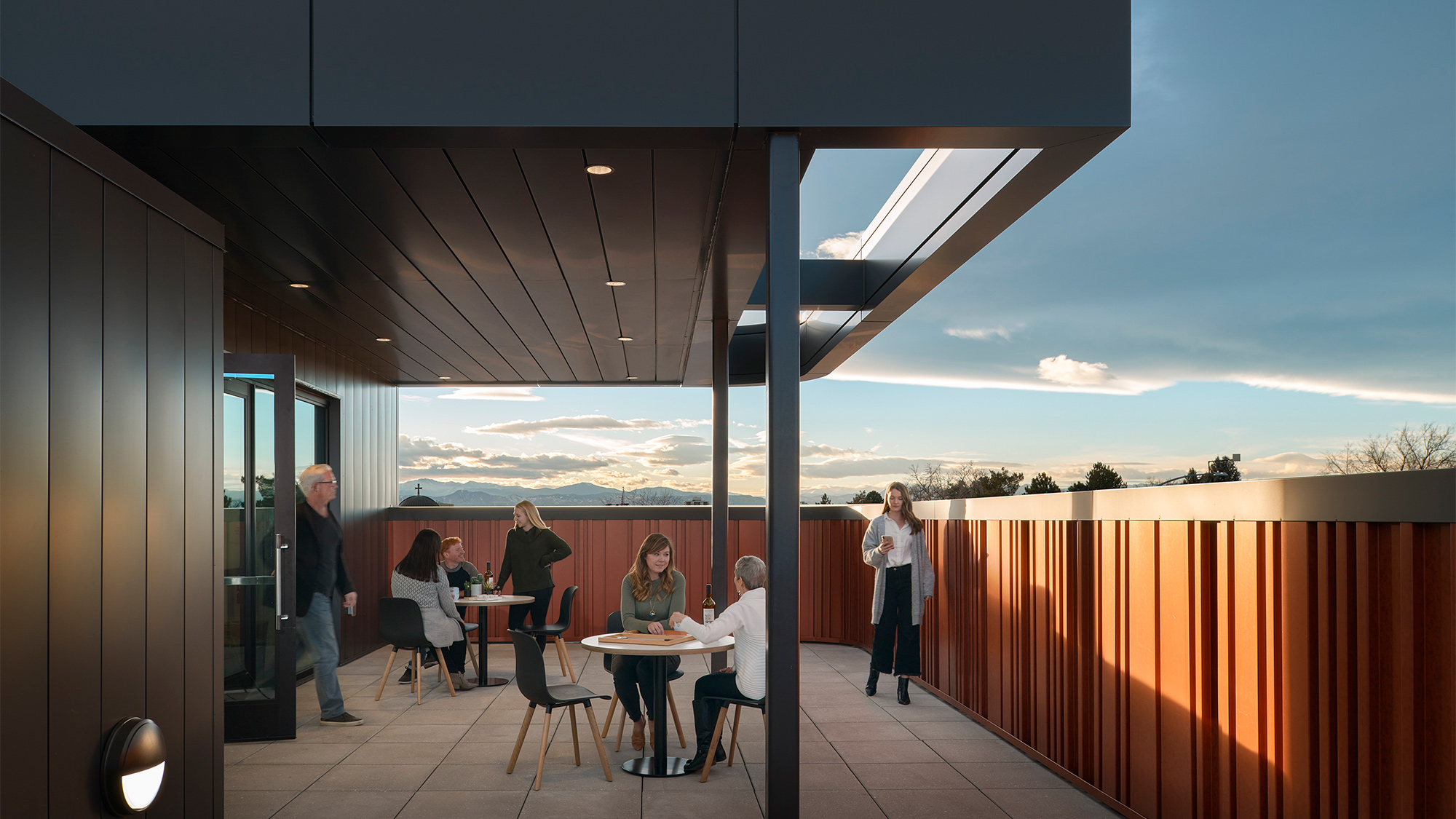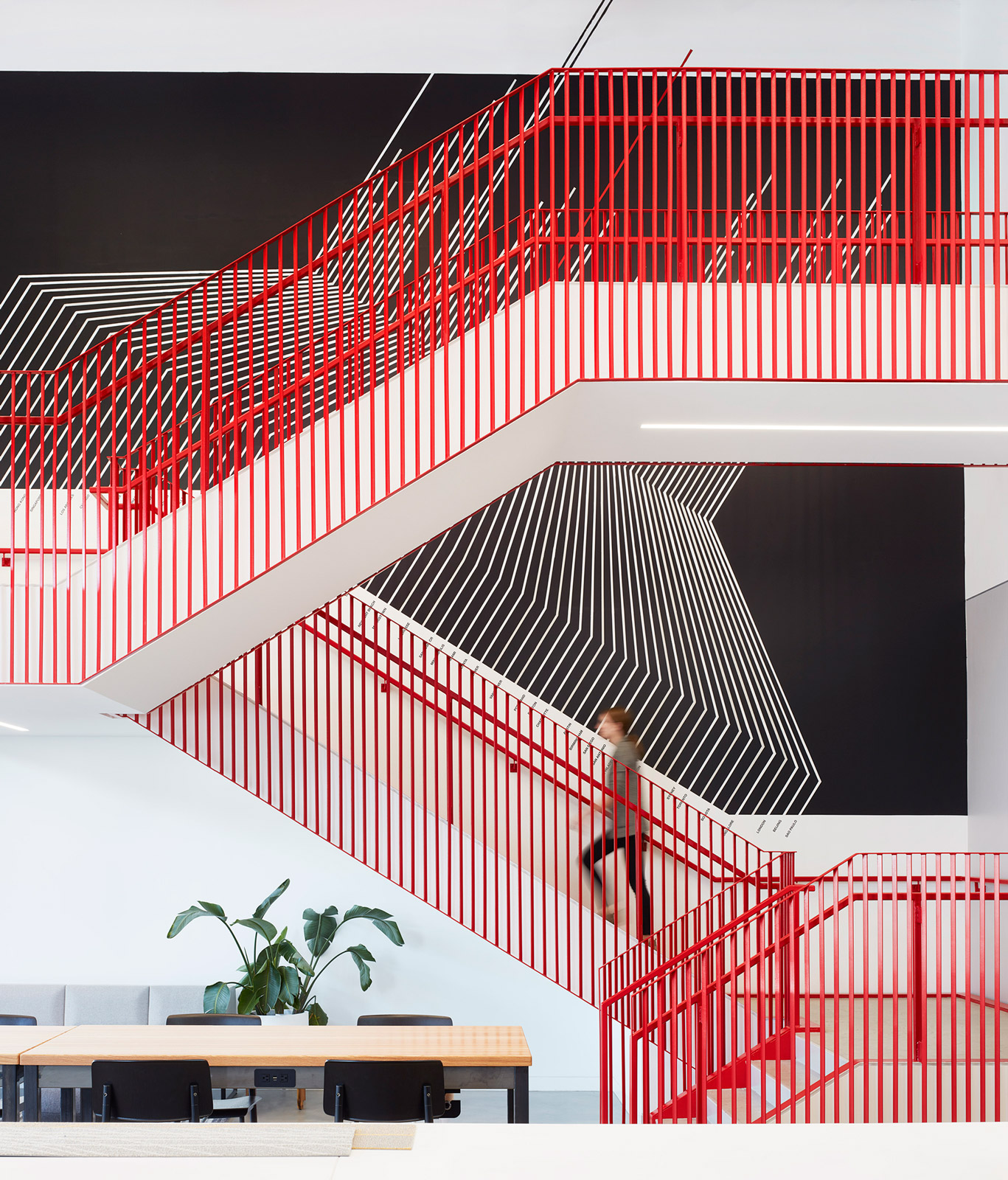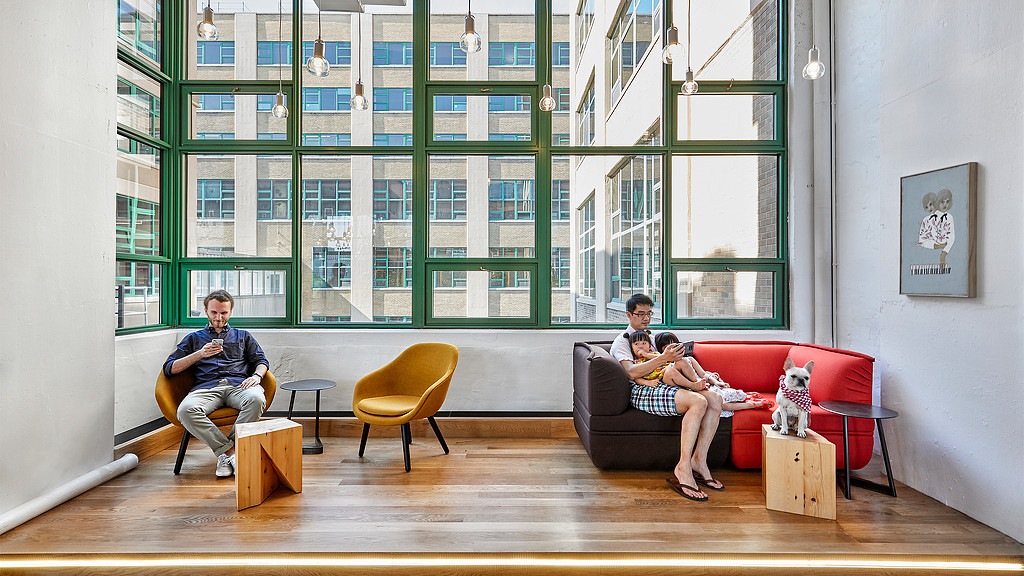How Workplace Design Can Ease Anxiety and Feelings of Isolation
August 20, 2020 | By Karen Mozes and Anthony Brower
Editor’s Note: This post is part of our ongoing exploration of how design is responding to the COVID-19 pandemic.
One of the most challenging issues we’ve all faced during the pandemic is the feeling of isolation. Now that some workplaces are reopening, we’ll have to find a way to shake off these feelings in a world that remains very restricted. The question is how? And what role should employers play to support their people as they transition back to the office?
The Impact of Working at HomeMuch of what has recently been written about working from home has focused on the positive aspects of the process, even going as far as suggesting that this may be the new norm. However, isolation from our peers has had unintended side effects that must be considered as we make decisions on how to structure the new workplace.
We’ve known as early as 1979 that isolation had serious implications when the Journal of Epidemiology concluded that death rates were double among those who lacked community or social ties. Loneliness has been associated with increased risk of heart disease and stroke, high cholesterol, dementia, and diabetes. In fact, Brigham Young University psychologist Julianne Holt-Lunstad asserts that isolation “can be as bad for your health as smoking 15 cigarettes a day.”
Isolation can also breed anxiety and a feeling of being out of control. But the opposite is also true: Mundane office routines can alleviate anxiety. Things like driving to work, having a cup of coffee in the break room, or attending a daily morning meeting in the main conference room makes us feel comfortable. Those routines are missing when we work from home, and some experts say that anxiety can increase because of a lack of routine. Clinical psychologist Dr. Ilyse Dobrow DiMarco points out, “anxiety is all about uncertainty and once you start removing certainties from people’s lives — people start to feel unmoored.”
Sense of Self and the Work WorldOccupational psychologists have recognized how deeply our identities are tied to the work we do, and they suggest that context is important to how we define ourselves. This is partly why companies go to a great deal of effort to develop missions, values, and policies that are reflected by the work environment and the people employed by the business. When we work at home, we lose some of that sense of mission and thus part of our own sense of identity. Something as simple as the loss of a shared sense of attire can diminish the feeling that we work for a common goal.
Before we can reopen the workplace, design needs to shift from simply apportioning space, to taking an active role in addressing the social threat that the loss of personal autonomy has created — while also ensuring that personal safety is paramount.
Outdoor meeting areas, previously considered a casual amenity, should become a top priority. Employers should embrace outdoor space for meetings and focus work in order to provide a new and engaging experience for staff to interact while safely distancing.

Spaces that encourage social interaction will give the worker the opportunity to again feel that sense of community which makes them feel empowered and rebuilds identity. Additionally, such spaces allow for the unscheduled moment from which our most innovative ideas often spring. It is in these moments that we feel our greatest sense of self-empowerment.
Another interesting consideration of work design that will help ameliorate the tensions of lost autonomy may be in design features that account for individual differences. Task lighting that can be set to a person’s needs, for example. Variable-height desks and a variety of chairs or seating types are simple ways to give people back a sense of control over their workspace. Other new changes may be more subtle, such as markers on or around someone’s work area that identify their preference for social distancing or interactions with colleagues.

Finally, isolation and depression often lead to a lack of interest in exercise, in overeating, and in less attention to health. Businesses can help returning employees find comfort in identity by providing spaces for exercise, for meditative moments, or even for short naps. Doing so also suggests to the worker a sense of choice and control over their day while emphasizing work as a place for individual expression. Such spaces can boost productivity and are often the source of important eureka moments that benefit the corporation.
COVID-19 has shown us what a disruption of the status quo looks like on a global scale and has left us to reconcile with what is left of our autonomy in a world permanently changed. What we will need are spaces that provide meaningful connections and respect everyone’s personal choices. Autonomy and connection will be core to creating an overall sense of well-being in the workplace.
For media inquiries, email .

